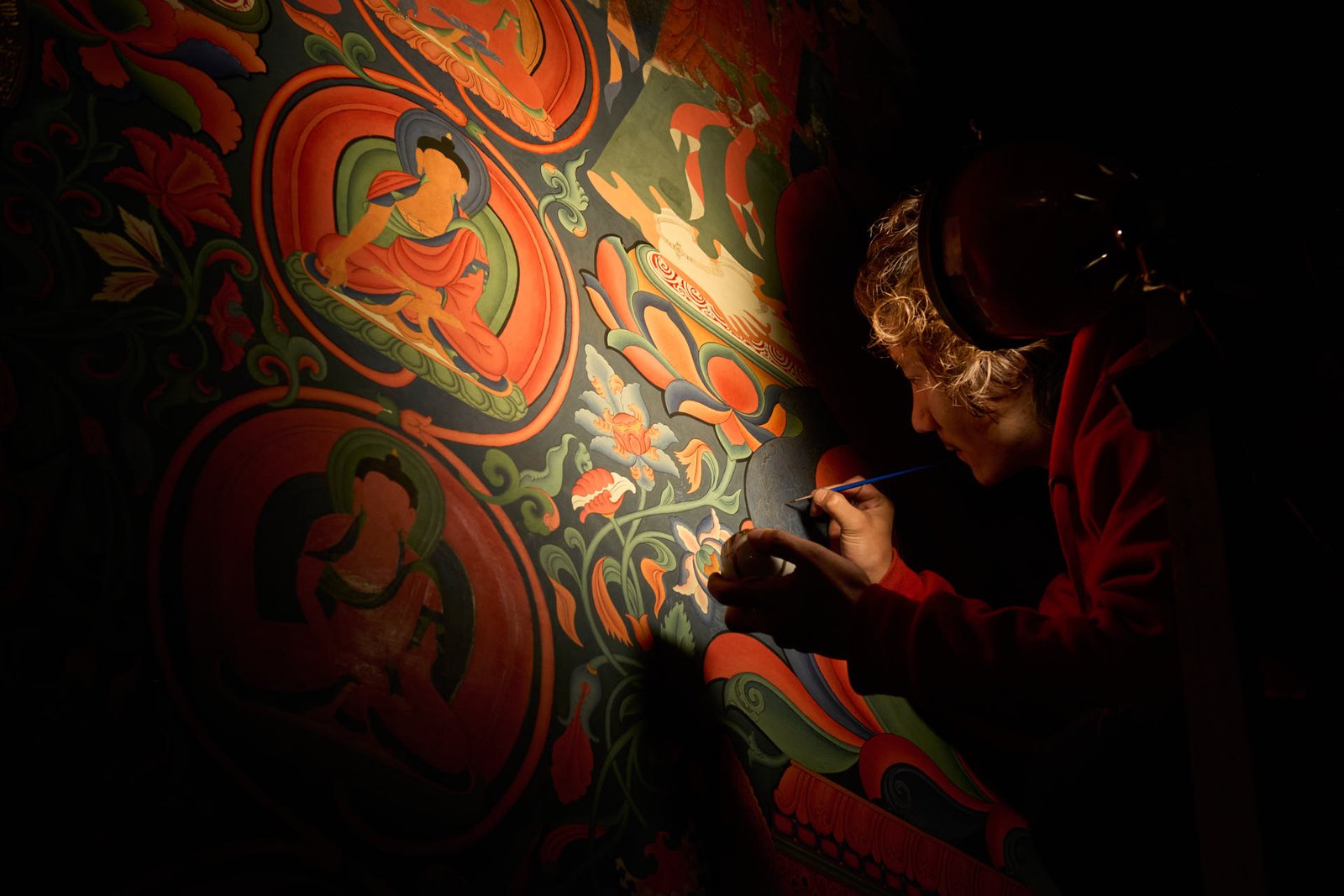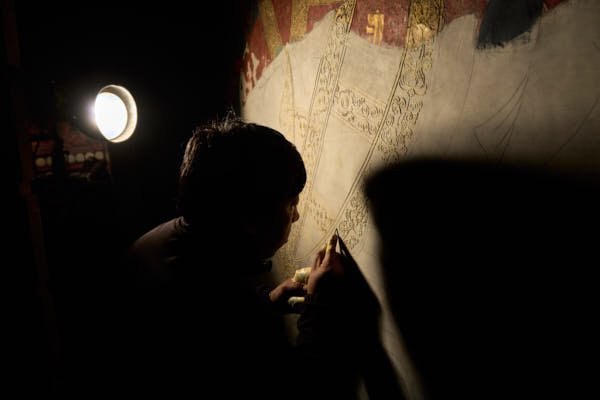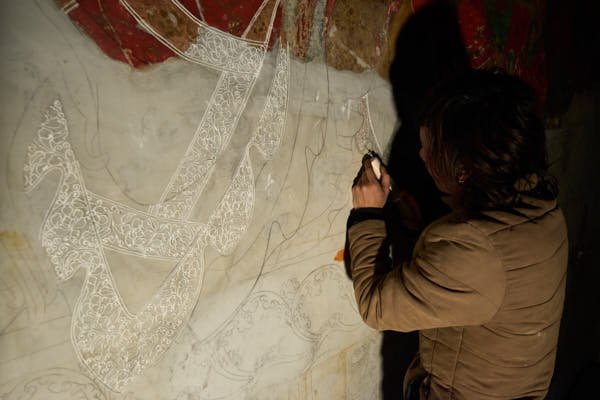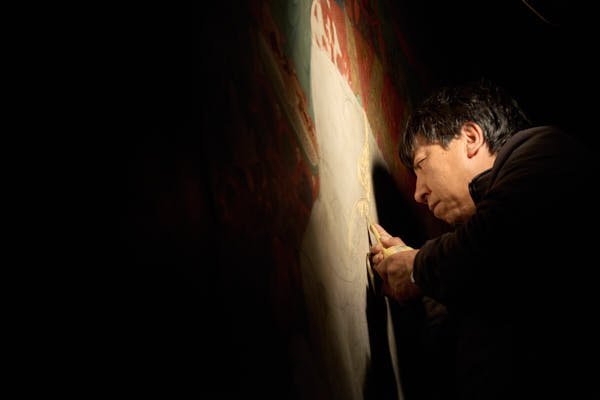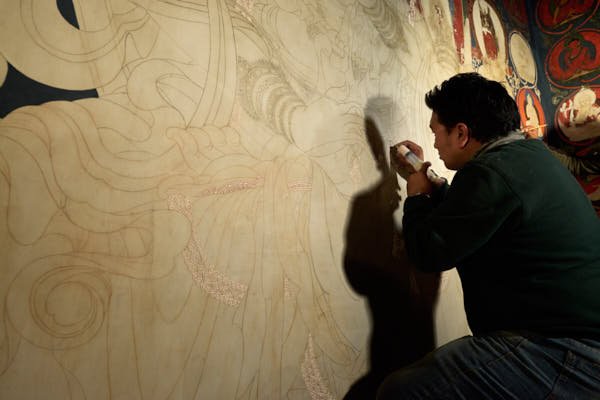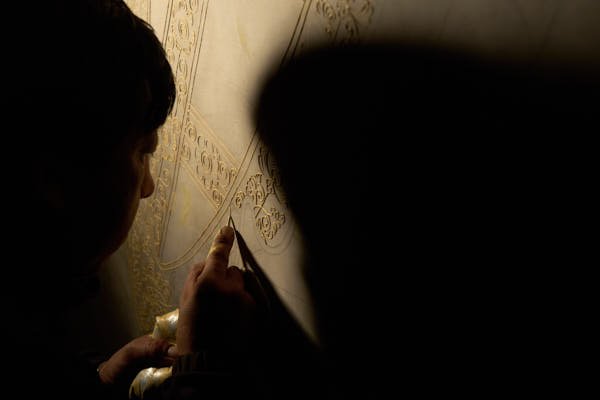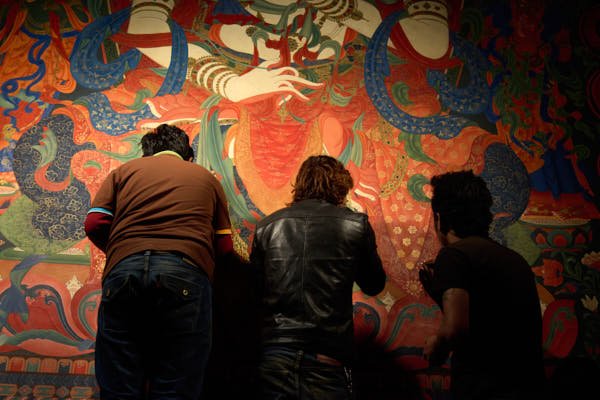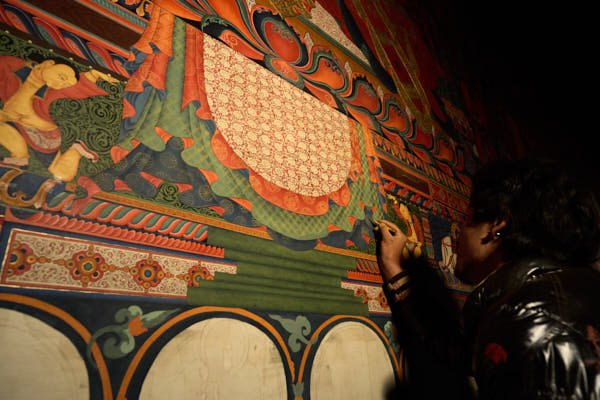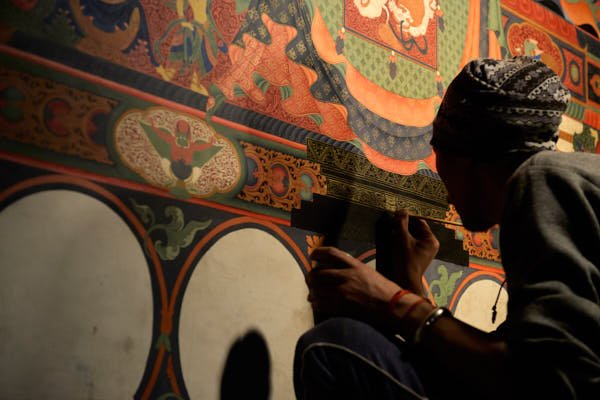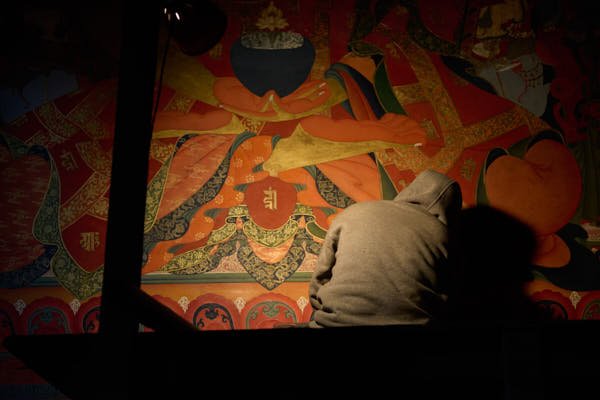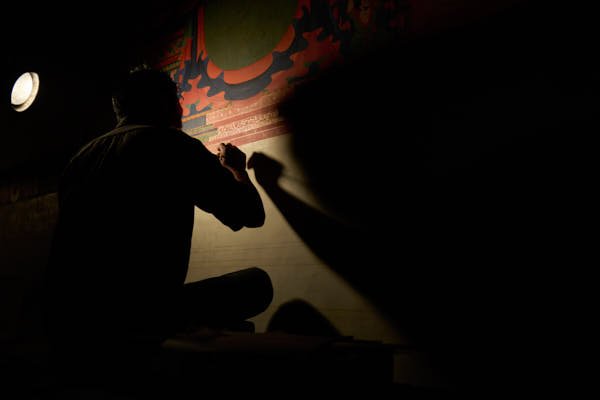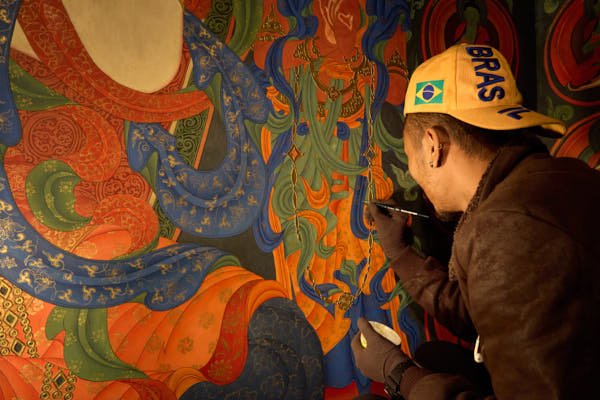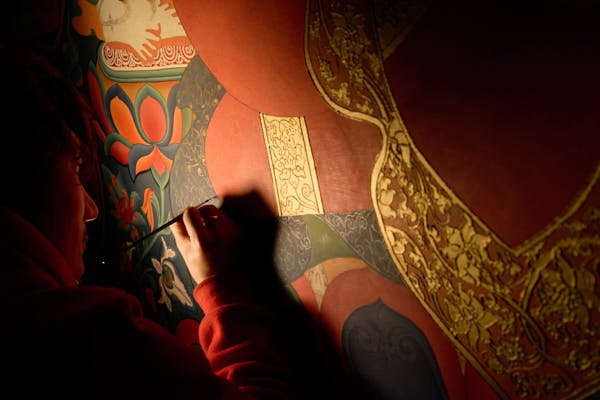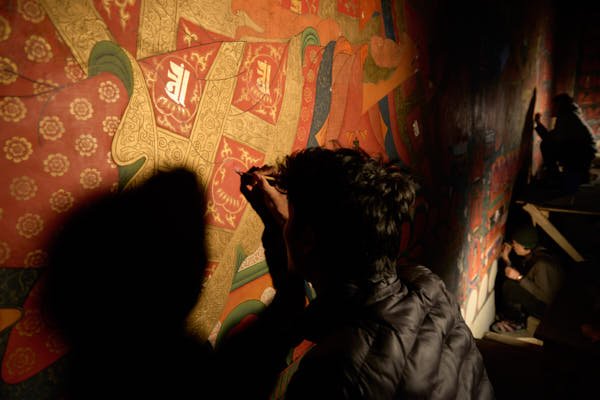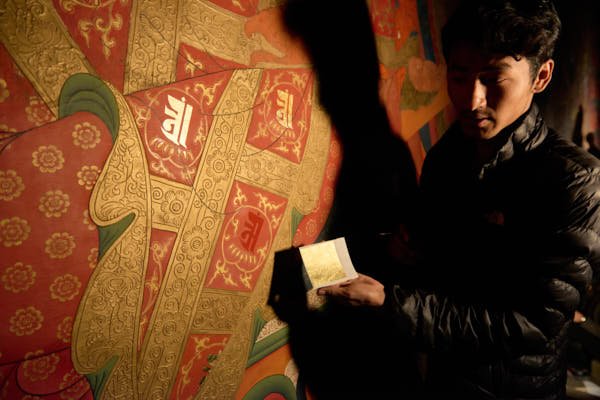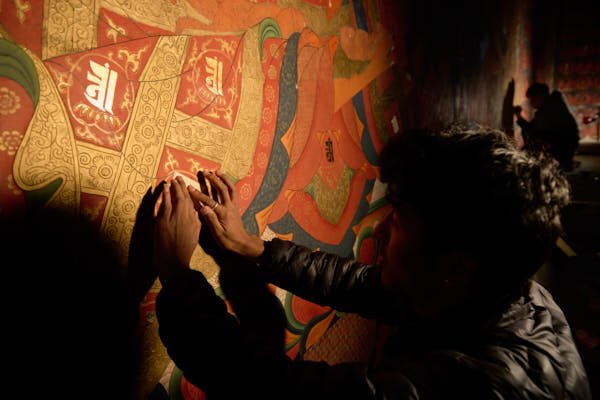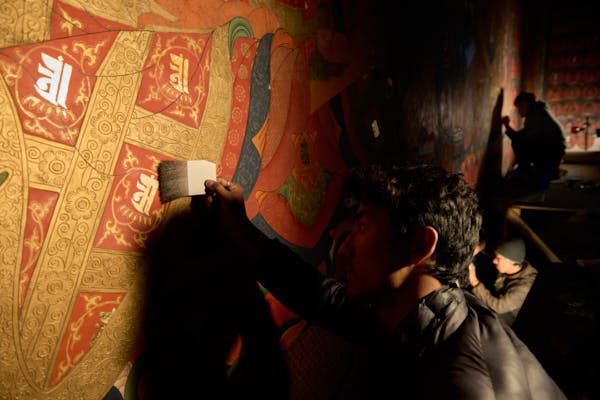relief work
The original relief work was used to create the jewelry and the brocades of the Buddha robes. Jewels, brocades, patterns and floral decorations vary from figure to figure and they were all copied on drafting paper and reproduced accordingly. Once the drawing was transferred to the wall, the relief work was carried out by outlining the sketch with a syringe and a truncated needle filled up with an acrylic based paste. In this way the outlines of the drawing slowly became embossed.
fake gold
Given the incredible amount of gold present in the original wall paintings, it would have been too costly for the project to use always real gold. All gold decorations present in the lower register of the murals and few of the first thrones we painted were carried out with a very good quality of fake gold coming from Thailand.
The original gold aged in different ways and there were slight differences in hue from one section of the XV century wall paintings to another. By mixing different hues of fake gold, at times together with some natural earth pigments to reduce the brightness of the gold, it was possible to imitate the color of the real gold and have the fake gold look like the old one. The binder for the fake gold consisted in a solution of Dammar varnish in Commercial Thinner.
real gold
Given the religious importance of the main deities that were painted in real gold it was decided to use 24K gold powder to paint the missing parts of the main Buddhas's body parts such as legs, arms, feet and hands where missing, following the monks's request to not contaminate the body of the images with impure elements. Furthermore, the floral decorations, the brocades and the patterns of the main deities and their attendants were painted with 24K gold powder as well so as to make the joints of the new painting with the old one as seamless as possible.
For large surfaces, the area to be gilded was previously painted with a warm orangish color to enhance the gold powder reflecting properties. The gold powder was mixed with a solution of Arabic Gum in water and then applied in several layers. Once the binder dried, the gold was polished with agate stones. 22K gold leaf was used instead for making the Sanskrit letters of the Buddhas robes following the original technique. The application of such leaf was carried out with gilders mordant.
